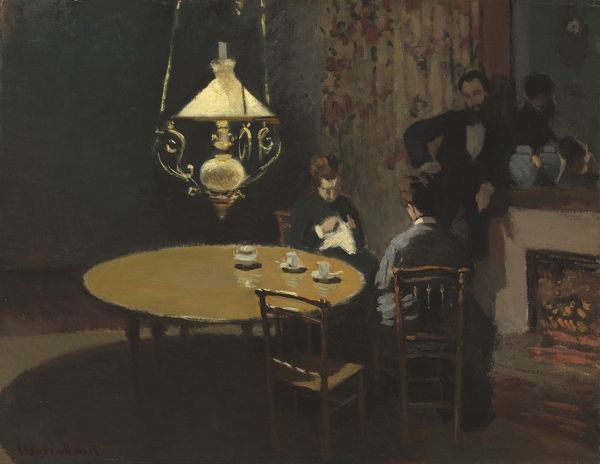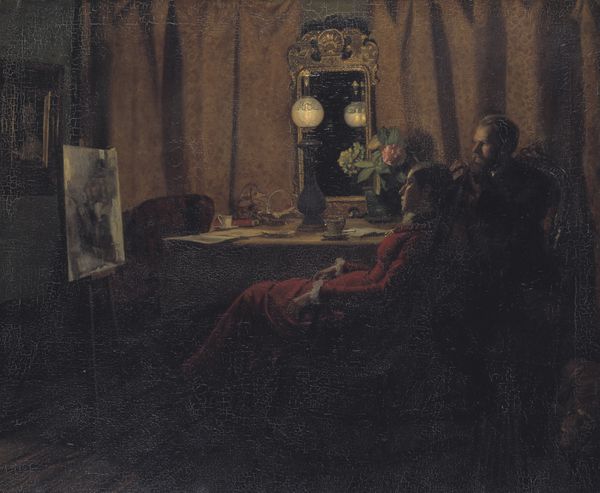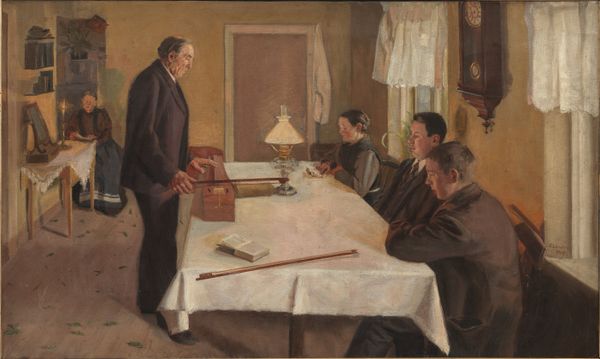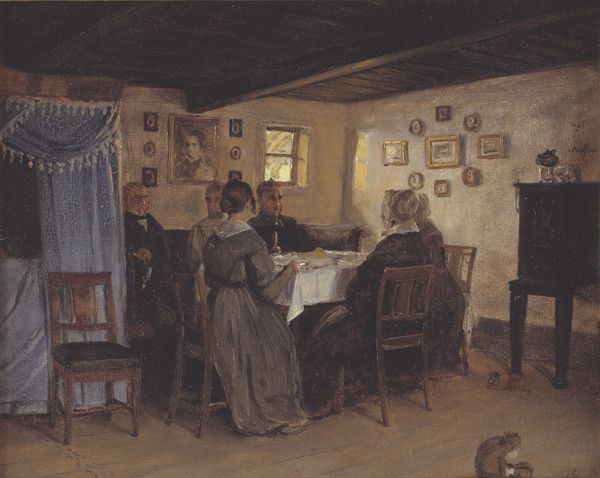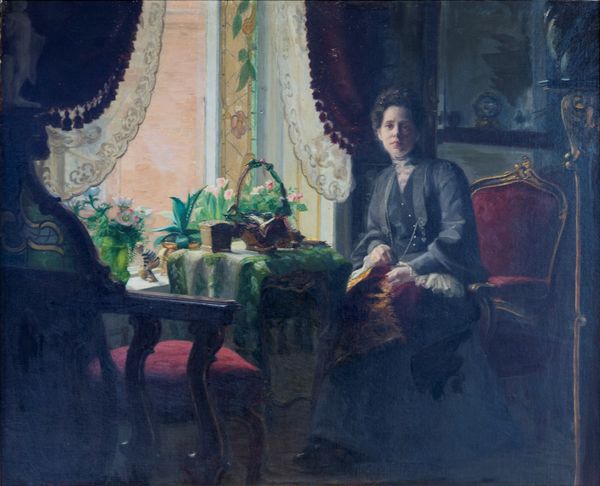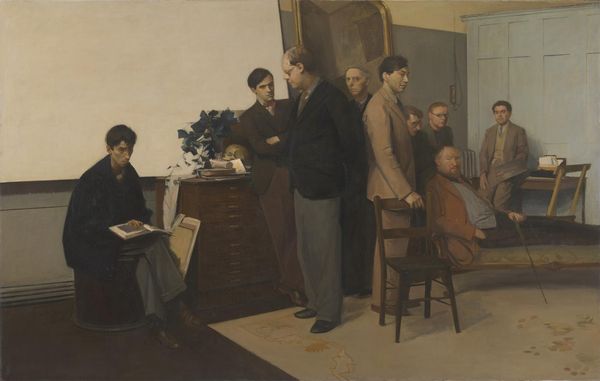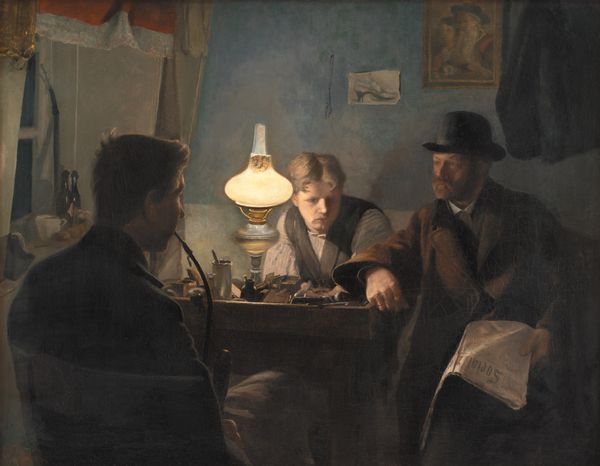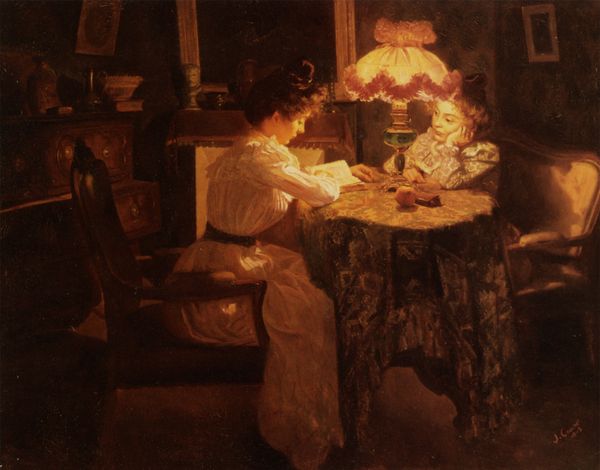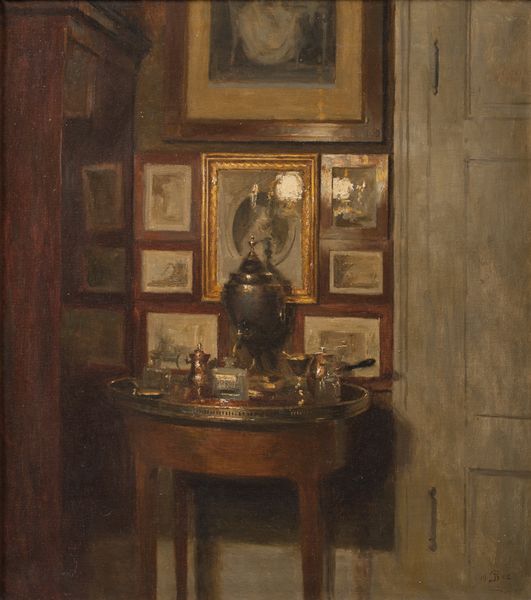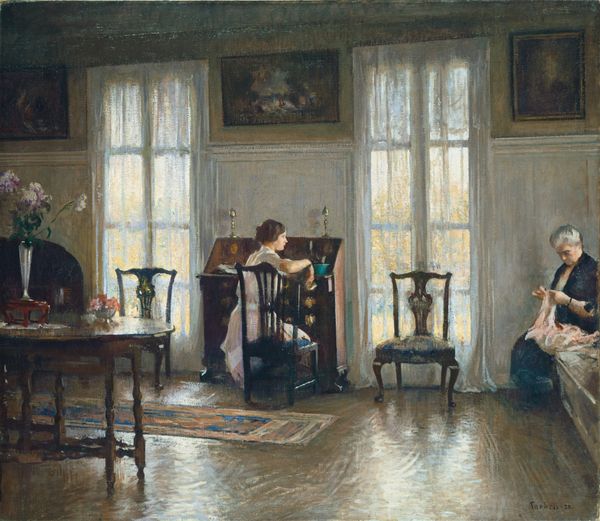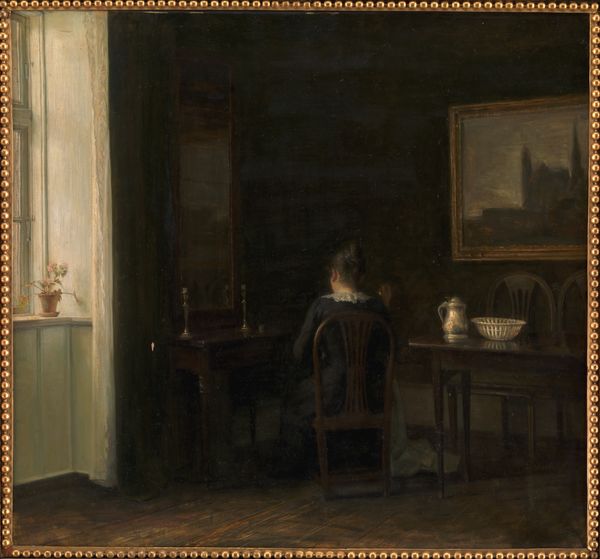
Dimensions: 105 cm (height) x 142 cm (width) (Netto), 132.3 cm (height) x 169.8 cm (width) x 12 cm (depth) (Brutto)
Editor: Here we have Viggo Johansen's "Evening Talk," painted in 1886 using oil. It's got such a wonderfully subdued and domestic feel. I’m drawn to the interplay of light, almost like a stage set. What strikes you most about this painting? Curator: For me, the appeal lies in understanding the means of its production and the societal context in which it was made. Think about the cost of oil paint in 1886, the expense of the canvases, and the labor involved in their preparation. These were not mass-produced materials available to everyone. Editor: Right, it speaks to a certain class, doesn't it? Curator: Absolutely. This isn't just a snapshot of an "evening talk"; it's a glimpse into the material privileges and social rituals of a particular segment of Danish society. Note how the lamp serves as the main source of illumination. What does this tell us? Editor: That light was precious, controllable... not something taken for granted, like electricity today. Curator: Exactly. And think about the symbolism of a shared domestic sphere at the time. How does the construction and allocation of space speak about gender roles and access to social commodities like, say, conversation and leisure? Editor: That's fascinating. I hadn't considered how much the availability of resources shapes even something as simple as a conversation. It's more than just people talking, it’s about *who* gets to talk and *how.* Curator: Precisely! By looking at the material reality embedded in this "intimate" scene, we uncover layers of meaning often overlooked by focusing solely on aesthetic impressions or supposed emotional states. We’re not simply gazing at art; we are deciphering a visual record of the means and forces of social production.
Comments
No comments
Be the first to comment and join the conversation on the ultimate creative platform.
